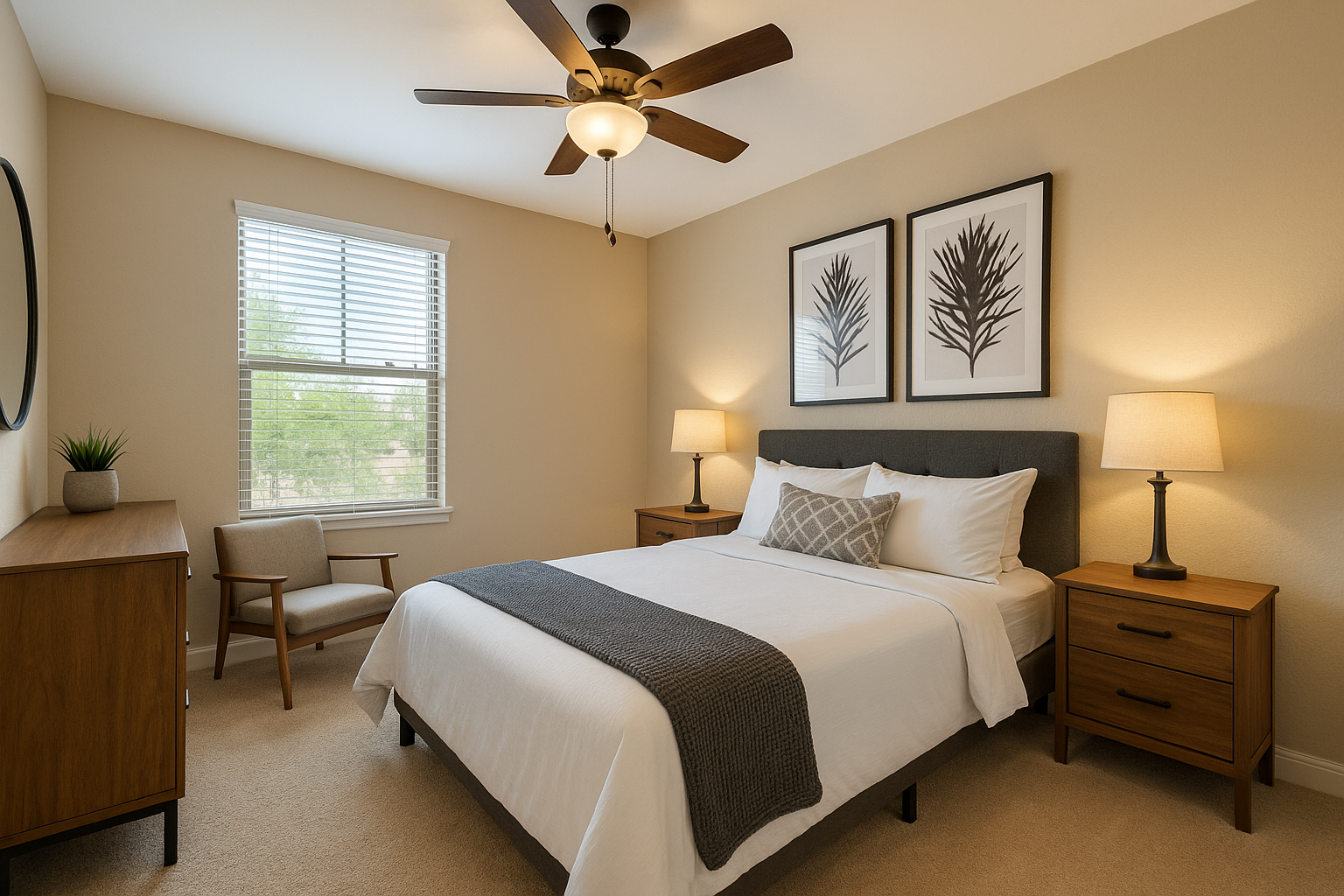If you’ve ever debated whether to rent out a property fully furnished, you’re not alone. In a college town like Tempe—home to Arizona State University, a growing tech workforce, and a constant flow of relocations—the question comes up often. Furnished rentals can be a great option for the right property and tenant base, but they’re not without their challenges.
Let’s take a closer look at the pros and cons of offering furnished rentals in Tempe and how to decide what’s right for you.
What “Furnished” Really Means
A furnished rental can range from partially furnished (just key furniture items and appliances) to fully furnished (everything from beds and cookware to linens and décor). The more you provide, the more convenience you’re offering—but also the more risk and responsibility you take on.
Furnished rentals also tend to attract shorter-term tenants, like visiting professionals, relocating families, or students needing temporary housing. That can mean quicker turnover and more management—but also higher rent potential.
As Redfin explains in their guide for new landlords, understanding your ideal tenant type is key before deciding how to furnish and market your rental property. What appeals to a short-term tenant in Tempe may not be ideal for someone looking to settle in for multiple years.
The Benefits of Furnished Rentals
1. Higher Rental Income
Tempe’s transient population—students, interns, and professionals on short-term contracts—often prefer move-in-ready homes. Furnished rentals can command premium pricing compared to similar unfurnished units, especially near ASU, downtown, or Tempe Town Lake.
2. Attracts Short-Term and Corporate Tenants
Furnished homes appeal to renters who want flexibility—people relocating, waiting on a new build, or working temporary assignments. These tenants are often willing to pay more for convenience.
3. Faster Leasing Process
Because furnished units remove the hassle of moving or buying furniture, they often rent faster. This can help reduce vacancy times and keep cash flow consistent.
4. Potential Tax Benefits
Landlords may be able to deduct the cost and depreciation of furnishings as business expenses. Always confirm with your accountant to ensure proper classification.
5. Added Market Appeal
A nicely styled, fully furnished unit can stand out in online listings and photos—especially in a competitive market like Tempe where curb appeal and first impressions matter.
The Drawbacks of Furnished Rentals
1. Higher Wear and Tear
More furniture means more items that can get damaged. Between tenants, expect additional cleaning, repairs, and replacements.
2. Shorter Lease Terms
While higher rent may offset some costs, shorter-term tenants mean more turnover and possibly more vacancy gaps between leases.
3. Larger Upfront Investment
Outfitting a home with quality furniture, linens, and kitchenware requires a significant upfront cost—and you’ll need to refresh items periodically.
4. Smaller Tenant Pool for Long-Term Leases
Tenants who already own furniture or plan to stay multiple years may skip over furnished listings altogether.
5. Added Management Complexity
You’ll need to track and maintain an inventory, inspect furnishings during move-ins and move-outs, and clarify who is responsible for damages.
6. Style Sensitivity
Furnishings that are too personal, outdated, or mismatched can turn potential tenants away. It’s best to stick with neutral, durable, modern designs.
Tips for Success
If you decide to offer a furnished rental in Tempe, here are a few ways to make it work:
Use durable, mid-grade furniture that looks great but can withstand wear.
Keep décor simple and neutral so it appeals to most renters.
Include a furniture inventory checklist with your lease.
Price fairly—don’t overinflate just because it’s furnished.
Consider 3–6 month leases to attract the right tenant base.
Stay compliant with Tempe’s short-term rental regulations if offering month-to-month options.
Is a Furnished Rental Right for You?
For some property owners in Tempe, furnished rentals are a great way to boost income and attract high-quality tenants. For others, the ongoing maintenance and higher turnover may not be worth the effort.
The best approach? Try it with one property first. Track your costs, vacancy periods, and tenant satisfaction. Once you see how it performs, you can decide whether it’s worth expanding to more homes in your portfolio.
Related Articles:
How to Write a Lease Agreement That Protects Your Phoenix Rental Property
What Full-Service Property Management Really Covers From Day One

